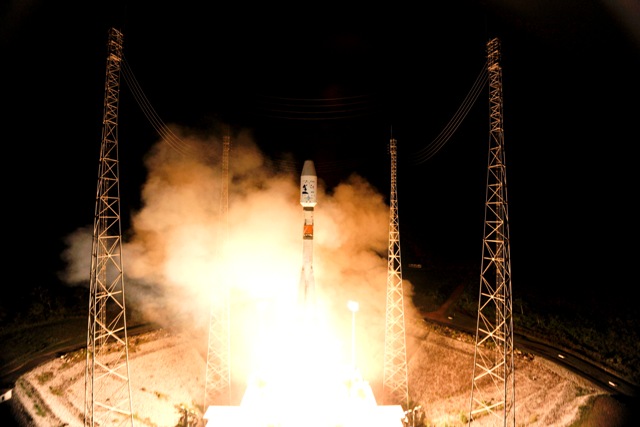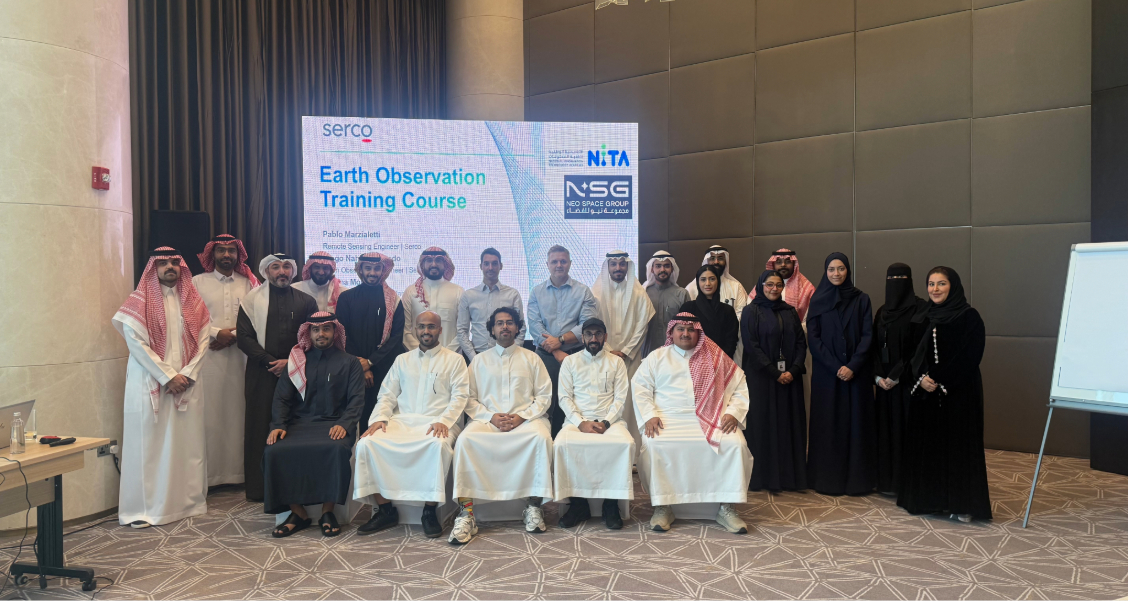UK scientists step closer to revealing origins of our Galaxy

Above:
Gaia was launched in December 2013.
Copyright ESA–S. Corvaja, 2013
UK researchers, backed by funding from the UK Space Agency, produced a precise 3D map of our Milky Way Galaxy using the cosmic treasure trove of data collected from the Gaia satellite, known as the ‘Galaxy Surveyor’.
The cosmic data – coordinated by the Institute of Astronomy in Cambridge – will enable astronomers, for the first time, to measure the mass of the Galaxy by examining the acceleration of the solar system. This ability will give us clues to the origins of our star system and could help confirm just how quickly the universe has expanded since it began.
How does Gaia work?
- The mission carries two telescopes, which it scans across the Milky Way from a location about 1.5 million km from Earth.
- The telescopes' mirrors throw their captured light on to a huge, one-billion-pixel camera detector connected to a trio of instruments.
- It is this ultra-stable and supersensitive optical equipment that Gaia uses to pick out its sample of stars with extraordinary precision and confidence.
- The called-for specification was to get to know the brightest objects' coordinates down to an error 1.94 degree.
- This angle is equivalent to the size of a pound coin on the Moon as seen from Earth.
- In addition to their position and proper motion, the stars are having their physical properties analysed by Gaia.
- Its instruments are acquiring vital statistics like temperature and composition. These are markers needed to help determine the stars' ages.
Caroline Harper, Head of Space Science at the UK Space Agency, said: “For thousands of years, we have been preoccupied with noting and detailing the stars and their precise locations as they expanded humanity’s understanding of our cosmos.
“Gaia has been staring at the heavens for the past seven years, mapping the positions and velocities of stars. Thanks to its telescopes we have in our possession today the most detailed billion-star 3D atlas ever assembled.”
Gaia is located at a Lagrange point, a gravitationally stable spot in the sun-Earth system, called L2, which is located about 930,000 miles (1.5 million kilometres) from Earth in the opposite direction from the sun. It has so far measured the positions and brightness of almost two billion stars, as well as detailing their positions, magnitudes and colours.
At Lagrange points, spacecraft can use a minimum of fuel to maintain the same location in space. Gaia is also far enough from Earth that the light emanating from our planet will not interfere with observations.
The information collected by the satellite is analysed back on Earth by the Gaia Data Processing and Analysis Consortium (DPAC), which the UK is a major partner of. The UK Space Agency, together with the Science and Technology Facilities Council (STFC), funds the Mullard Space Science Laboratory and the universities of Cambridge, Edinburgh, Leicester who make up the UK contribution to the group.
The data has been coordinated and prepared at the Institute of Astronomy in Cambridge and all of the mission's data has been made available to the public so they can help identify interesting phenomena in this massive cosmic treasure trove.
Dr Floor van Leeuwen of the Institute of Astronomy at the University of Cambridge, said: “Gaia is measuring the distances of hundreds of millions of objects that are many thousands of light years away, at an accuracy equivalent to measuring the thickness of hair at a distance of more than 2000 kilometres. These data are one of the backbones of astrophysics, allowing us to forensically analyse our stellar neighbourhood, and tackle crucial questions about the origin and future of our Galaxy.”
The European Space Agency (ESA) launched its Gaia mission in 2013. The mission's name was originally an acronym for Global Astrometric Interferometer for Astrophysics, but interferometry is no longer the method by which the mission does its work.
Its goal was to update and extend the work of a previous satellite from the 1980s/90s called Hipparcos, which was an observatory that created the go-to Milky Way catalogue for its time.
This astonishing chart of our cosmic neighbourhood mapped the precise position, brightness, distance and proper motion (that sideways movement on the sky) of 100,000 stars.
With its first release of data in 2016, Gaia increased the number of known stars in the Milky Way twenty-fold.
The UK Space Agency contributes £374 million a year to ESA. This membership allows UK scientists to collaborate on a range of programmes, from Earth Observation satellites and Mars Rovers, to advanced telecommunications and commercial applications. The UK Space Agency has already contributed £19 million to Gaia on processing and analysing the findings and STFC has invested an additional £2.4 million into supporting the catalogues derived from the data.












